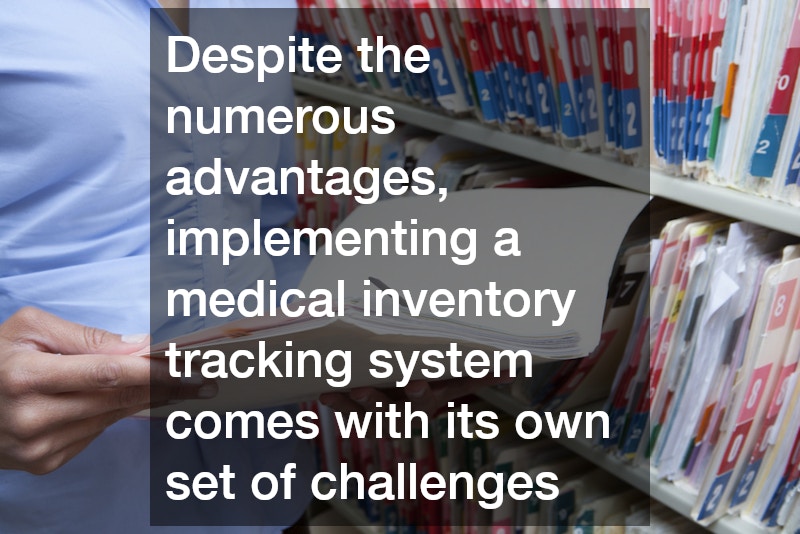In the fast-paced and ever-evolving healthcare industry, the efficient management of medical supplies and equipment is critical to ensuring patient safety and operational success. Medical inventory tracking systems have emerged as an essential tool for healthcare providers, helping to streamline inventory management, minimize errors, and reduce costs. These systems use advanced technologies such as barcode scanning, RFID, and predictive analytics to provide real-time tracking of medical supplies, ensuring that healthcare facilities can quickly respond to changing demands.
With the increasing complexity of healthcare operations, implementing an effective inventory tracking system is now more important than ever for maintaining optimal stock levels, ensuring regulatory compliance, and improving patient care. This article explores the key benefits, challenges, and considerations of medical inventory tracking systems in today’s healthcare environment.
Introduction to Medical Inventory Tracking Systems
Medical inventory tracking systems have become a pivotal part of modern healthcare operations. The need for streamlining inventory management processes has grown exponentially as healthcare facilities face increasing demands. These systems provide a comprehensive solution to overlook the complex inventory processes, ensuring that vital supplies are always available. By integrating technology, healthcare providers can minimize errors and optimize their supply chain. In today’s digital age, utilizing medical inventory tracking not only enhances efficiency but also provides significant cost savings.
The primary goal of any medical inventory tracking system is to maintain accurate records of stock levels. This involves real-time tracking of inventory, from receiving shipments to monitoring usage. Advanced systems use barcode and RFID technology to automate this process, thereby reducing human error and labor costs. Moreover, these systems can forecast inventory needs based on historical data, enabling proactive decision-making. This predictive capability ensures that critical items are always in stock, reducing the risk of shortages during emergencies.
Implementing a dedicated inventory tracking system can transform a healthcare facility’s operations. It ensures compliance with regulations by providing detailed records of all transactions. Automation of inventory-related tasks allows staff to focus more on patient care rather than administrative duties. Reporting tools within these systems also help identify trends and inefficiencies, leading to continuous improvement of inventory management practices. Consequently, this contributes to better patient outcomes as healthcare providers can focus resources where they are most needed.
The Benefits of Efficient Medical Inventory Management
Effective medical inventory management plays a crucial role in the operational success of any healthcare facility. One of the primary benefits is the reduction of waste, ensuring that medical supplies are used efficiently and before expiration. By utilizing precise tracking systems, hospitals can prevent overstocking and eliminate the costs associated with expired inventory. Moreover, improved inventory controls enable better budget management, as resources are allocated more effectively. This fiscal responsibility allows healthcare facilities to invest more in patient care and advanced medical technologies.
Another significant benefit is the increased accuracy in inventory reporting. With technology-driven solutions, manual counting errors are minimized, which ensures reliable supply data. Accurate reporting also aids in regulatory compliance, as healthcare institutions must adhere to stringent inventory management standards. This level of precision allows for seamless audits and accountability in supply chains. Ensuring compliance not only avoids potential fines but also maintains the reputation of the healthcare facility as a reliable provider.
Furthermore, efficient inventory management systems bolster the supply chain resilience of healthcare providers. By having robust tracking systems in place, healthcare facilities can quickly adapt to emergencies and changes in demand. This agility is essential in unforeseen circumstances like pandemics, where rapid response and resource allocation are critical. The adaptability of these systems also allows easier incorporation of new technologies and practices as they emerge. Thus, the integration of advanced inventory management ensures continuous improvement and responsiveness within healthcare settings.
Challenges and Considerations in Implementing Medical Inventory Tracking
Despite the numerous advantages, implementing a medical inventory tracking system comes with its own set of challenges. The initial setup and integration with existing systems can be both time-consuming and costly. Facilities must consider the financial investment required for technology infrastructure and training personnel. Additionally, transitioning from manual to automated processes may face resistance from staff accustomed to traditional methods. Therefore, it is essential to have change management strategies in place when introducing new systems.
Another consideration is the complexity associated with data management and protection. Handling sensitive inventory data requires robust cybersecurity measures to prevent breaches and unauthorized access. Facilities need to ensure compliance with data protection regulations, such as the Health Insurance Portability and Accountability Act (HIPAA) in the United States. This aspect of inventory management demands continuous monitoring and updates to safeguard against evolving cyber threats. Proper handling of data ensures the integrity of the healthcare facility’s operations and protects patient information.
Lastly, maintaining the system’s efficiency requires ongoing maintenance and updates. Technology is constantly evolving, and failing to keep systems up-to-date can lead to operational inefficiencies. Regular software updates, staff training, and system audits are necessary to sustain the benefits of inventory tracking solutions. Encouraging continuous staff education ensures that personnel remain proficient in using the system effectively. Consequently, addressing these challenges proactively enables healthcare facilities to reap the full benefits of modern inventory tracking systems.
.




